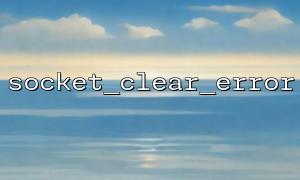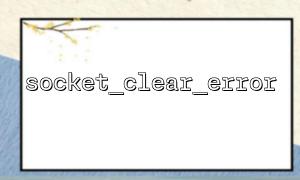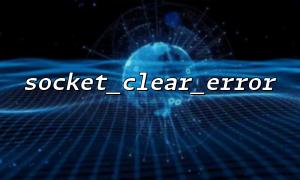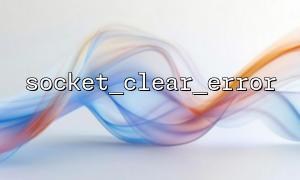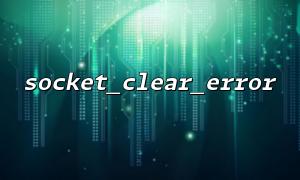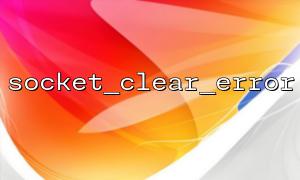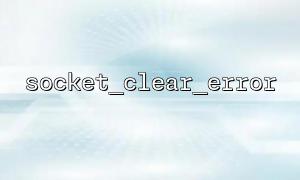socket_clear_error() is primarily used to clear previous error flags in socket connections or communications to prevent lingering error states from affecting subsequent operations. It does not throw exceptions but resets the error status, so the timing of its call needs to be considered carefully.
try-catch is used to catch exceptions that occur during program execution. If an exception arises during socket-related operations, the catch block can handle it accordingly. It is important to note that most PHP socket extension functions indicate errors by returning false and using socket_last_error(), rather than throwing exceptions—unless you are using object-oriented socket classes or explicitly throwing exceptions yourself.
If you perform socket operations inside a try block and want to clear the error status immediately after the operation completes, placing socket_clear_error() inside the try block is reasonable. This ensures that error states are cleared only if the operation executes normally, avoiding interference with exception handling.
try {
// Perform socket-related operations
$result = socket_connect($socket, 'm66.net', 80);
if ($result === false) {
throw new Exception('Connection failed, error code: ' . socket_last_error($socket));
}
// Clear error state
socket_clear_error($socket);
} catch (Exception $e) {
echo 'Exception: ' . $e->getMessage();
}
If you want to ensure the error state is cleared regardless of whether an exception occurs, you can place socket_clear_error() outside the try-catch block:
try {
// Perform socket operations
$result = socket_connect($socket, 'm66.net', 80);
if ($result === false) {
throw new Exception('Connection failed, error code: ' . socket_last_error($socket));
}
} catch (Exception $e) {
echo 'Exception: ' . $e->getMessage();
}
// Clear error state regardless of exception
socket_clear_error($socket);
This approach ensures error states are cleared whether or not an exception occurs. However, you must confirm that the $socket resource is still valid in exception scenarios if socket_clear_error() depends on it.
If your code design is exception-driven and you only want to clear error states after successful operations, it is recommended to place socket_clear_error() inside the try block.
If you want to clear error states regardless of success or failure, placing it outside the try-catch block is appropriate, but ensure the $socket resource remains valid.
In some cases, placing it in a finally block (supported since PHP 5.5) is ideal, as it guarantees execution and keeps structure clear:
try {
$result = socket_connect($socket, 'm66.net', 80);
if ($result === false) {
throw new Exception('Connection failed, error code: ' . socket_last_error($socket));
}
} catch (Exception $e) {
echo 'Exception: ' . $e->getMessage();
} finally {
socket_clear_error($socket);
}
This way, the cleanup will execute regardless of exceptions.
The key to where you call socket_clear_error() lies in your error handling logic design:
Placing it inside the try block suits clearing the state after successful operations;
Placing it outside try-catch or in finally suits unified cleanup to ensure resources are clean.
Properly arranging the cleanup will make your socket network programs more robust and maintainable.



